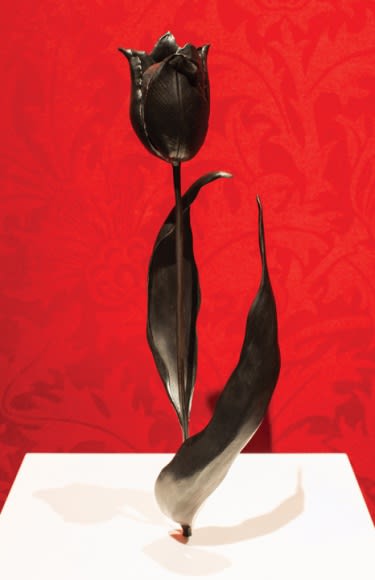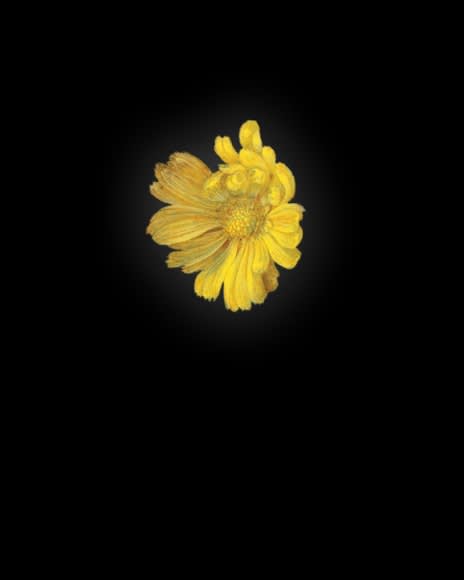Rob and Nick Carter
Jenkins Johnson Gallery is pleased to present acclaimed British artistic duo Rob and Nick Carter in their first solo exhibition in San Francisco, which runs from September 4 through November 1, 2014. The exhibition will feature digitally rendered paintings, sculptures, and photographs that recreate artistic masterpieces. The works examine and push boundaries between the real and the imagined, analogue and digital, and the traditional and the progressive. The Carters’ first ‘digital painting,’ which appears still but in fact changes indiscernibly, was highly celebrated as key work at the world’s leading art fair TEFAF by Art Newspaper and New York Times, and has been exhibited at the Frick Collection in New York (the first time the museum has exhibited digital art), as well as at Manchester Art Museum, and was collected by The Mauritshuis Museum in the Netherlands.
Collaborating for 16 years, the Carters’ art is defined as simple, focused, and immaculately presented. At the foundation of their work is the notion of perception and how we engage with and see a work of art. The Carters reproduce historical masterpieces, harnessing some of the most cutting edge technology, to reinstate sustained and deep looking, something that has been lost through the technological revolution. They subvert the notion of soullessness and image overload that is present in today’s society. They challenge the average viewer’s six-second attention span and reward them for engagement. “Computer-generated imagery is our form of reality,” says Nick. “This is what we see everyday.” The artworks in the exhibition are a hybrid of two modes of art making—the old and new. Color, form, and light are central to their images, which reengage with art of the past.
Jenkins Johnson Gallery is pleased to present acclaimed British artistic duo Rob and Nick Carter in their first solo exhibition in San Francisco, which runs from September 4 through November 1, 2014. The exhibition will feature digitally rendered paintings, sculptures, and photographs that recreate artistic masterpieces. The works examine and push boundaries between the real and the imagined, analogue and digital, and the traditional and the progressive. The Carters’ first ‘digital painting,’ which appears still but in fact changes indiscernibly, was highly celebrated as key work at the world’s leading art fair TEFAF by Art Newspaper and New York Times, and has been exhibited at the Frick Collection in New York (the first time the museum has exhibited digital art), as well as at Manchester Art Museum, and was collected by The Mauritshuis Museum in the Netherlands.
Collaborating for 16 years, the Carters’ art is defined as simple, focused, and immaculately presented. At the foundation of their work is the notion of perception and how we engage with and see a work of art. The Carters reproduce historical masterpieces, harnessing some of the most cutting edge technology, to reinstate sustained and deep looking, something that has been lost through the technological revolution. They subvert the notion of soullessness and image overload that is present in today’s society. They challenge the average viewer’s six-second attention span and reward them for engagement. “Computer-generated imagery is our form of reality,” says Nick. “This is what we see everyday.” The artworks in the exhibition are a hybrid of two modes of art making—the old and new. Color, form, and light are central to their images, which reengage with art of the past.
Masterworks in Digital Motion
Included in the exhibition is their groundbreaking series Transforming, which was four years in the making. These works recreate Old Master paintings into time-lapse digital renderings with the help of the Oscar-winning creative visual effects studio Moving Picture Company (MPC), known for their work with Life of Pi and World War Z. These digitally-rendered paintings breathtakingly retain the brushwork and paint texture of the originals to create living and breathing paintings. Antique-style frames add to the viewer’s sense of a real oil painting. The whole painstaking process calls attention to the mastery of the original and allows us to consider it in a new light.
Transformation has always played a subtle role in their art, and in the pieces Transforming Nude Painting and Transforming Still Life Painting the passage of time is a key component. The scenes pass from dawn to dusk imperceptibly with an occasional flourish of movement. Transforming Nude Painting is a digital recreation of the Italian Renaissance artist Giorgione’s Sleeping Venus (circa 1510). This 140-minute piece blends real-time footage of a sleeping model with a digital rendered landscape. A deeply evocative, highly naturalistic presentation of a goddess sleeping, the viewer is transported to the Venetian landscape. Giorgione’s original painting was a careful balancing act between a scene of idyllic rural contemplation and a sensual presentation of a beautiful nude, which was shocking and daring for its day. The Carters have heightened this paradox by creating a serene depiction of passing time that displays tantalizing moments of eroticism as Venus unconsciously moves her fingers across her body. Presented on the most technologically advanced 4K screen, having four times the definition of an HD screen, the piece marks a huge development in the employment of digital rendering and sculpting, blending actual footage of a sleeping model with digitally generated imagery. Transforming Still Life Painting is an exact but shifting copy of a 1618 work by Ambrosius Bosschaert the Elder titled Vase with Flowers in a Window, which has been praised as being “better than the real thing” by old master dealer Bob Haboldt.
Paintings in 3 Dimensions
Along the same lines, working digitally, the Carters turn masterpieces into sculptures. The sculptures in this exhibition, Black Tulip, and Sunflowers, are recreations of a watercolor by Judith Leyster dating from 1643 and Vincent van Gogh’s Sunflowers—a celebrated Post-Impressionist icon from 1888 that is in the collection of London’s National Gallery. Using the most advanced technology in the world, the paintings are turned into 3D digital files by MPC, which are then printed three-dimensionally and serve as the basis for a lost wax bronze. The bronze flower casts allow for a level of detail and delicacy, so the viewer may marvel in these masterpieces in a new way. In Sunflowers, van Gogh’s lively and loose brushstrokes come to life in the round. Black Tulip is subtle and quiet symbol of the transition of Dutch Golden Age realism to digital triumphs of the twenty first century.
Transforming the Dutch Golden Age
The exhibition includes photographically-based series Dutch Flowers, and Six Portraits in Six Colours, which are digital manipulations of artwork from the Dutch Golden Age. By refashioning flowers and portraits, art of the past is brought into contemporary art spaces, allowing viewers to interact with art history in a way they might otherwise not find. For Six Portraits in Six Colours, the Carters chose portraits paintings by Michiel Jansz van Miereveld (1567–1641) that are owned by important institutions such as the Metropolitan Museum of Art, New York, and National Portrait Gallery, London, and replace the neutral colors of the women’s elaborate collars with bright primary colors. This transformation makes the Old Master painting more likely to capture the attention of the modern day viewer. In Dutch Flowers, the Carters isolate single flowers from bouquets, vases and floral arrangements of Dutch still life paintings, creating flowers that almost eerily float against black backgrounds. Minimizing the elements of the original still life composition focuses the viewers’ attention, both catering to their six-second attention span, and also giving space and time to look and perceive a subject that may have otherwise been overlooked or discarded as dated.
Artist Bio
Rob and Nick met at school at the age of 16 but did not collaborate until they became a couple 10 years later. Rob specialized in fine art photography and Nick in painting. Their work is in collections of: the Mauritshuis, The Hague; the Frans Hals Museum, Haarlem; the Victoria and Albert Museum, London; the David Roberts Foundation, London; Städel Museum, Frankfurt am Main; the Frits Lugt Collection, Paris; the Royal Bank of Scotland; and Museum of Neon Art, Los Angeles. They have been shortlisted for the Sovereign Art Prize and The John Moores Painting Prize. They have executed several large-scale public and corporate commissions throughout London including works for Great Ormond Street Hospital, Cardinal Place, Victoria, 200 Aldersgate, and Saville Row.
-

Rob and Nick Carter
Abutilon after Jan van Huysum, 2013
cibrachrome print
11 x 9 inches
edition of 12
-

Rob and Nick Carter
Black Tulip (after Judith Leyster from Tulip Book, 1643), 2012
black patinated bronze
13 inches high
edition of 12
-

Rob and Nick Carter
Calendula after Ambrosius Bosschaert the Elder, 2013
cibachrome print
11 x 9 inches
edition of 12
-

Rob and Nick Carter
Cistus after Rachel Ruysch, 2013
cibachrome print
11 x 9 inches
edition of 12
-

Rob and Nick Carter
Six Portraits in Six Colours, after Miereveld, 2013
6 cibachrome prints mounted on aluminum and framed
12 x 10 inches
edition of 12






